Pros: Good tonality, 12 steps of treble and bass adjustment, lovely volume knob, good pairing with RHA CL1 and CL750, power output good for all IEMs, excellent format compatibility, fantastic sound when fed by a DAP
Cons: Impedance too high on balanced output (4.4Ω), soundstage somewhat small compared to competition, amplification too weak for hungry cans, USB issues, that lovely volume knob used with sensitive IEMs
List price: £399.00 ($499)
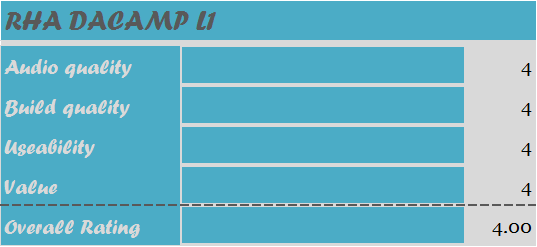
Acknowledgment
Thanks @RegularIan (formerly known as @RHA Iain) and Niketa of @RHA Team for sponsoring this wonderful tour and giving me the honour of overseeing and organizing the UK leg. Thanks to all the people on the tour before me for putting in such wonderful performances. The RHA DACAMP L1 was provided to me as a sample in return for my honest opinion.
Introduction
I first met Iain, formerly of RHA, at the Cambridge UK HeadFi meet. Iain joined us for a meetup and listening session in the TraveLodge and joined us at a restaurant for beer and vittles, in addition to giving us a listen to the pre-production RHA T20 during the meet. That pre-production RHA T20 was really piercing in certain parts of the treble—I think our feedback from the meet helped make the RHA T20 more approachable. You’re very welcome world. 😉
RHA is the acronym for Reid Heath Audio, a Scottish company out of Glasgow that has been producing headphones since roundabout 2012. The headphones are designed in Scotland and manufactured in China, because China kicks butt at manufacturing of all qualities and costs a whole lot less than Western manufacturing. You couldn’t get RHA’s build quality for double the price or more if it were manufactured in Scotland. RHA is known for a tendency towards fun sounding headphones that lean towards bright. They also have ridiculous warranties.
Since that Cambridge meet, RHA has taken the world by storm. I personally have reviewed the s500i and the ma750, both excellent headphones with stellar build quality. I first heard about the DACAMP L1 when it was still strictly confidential, but didn’t get to try it out till after all the UK tour folks finished their reviewing—that’s six months’ wait. In this review we’ll see if the DACAMP L1, RHA’s first step into the source arena, lives up to the reputation of its headphone predecessors.
I think it is valuable for readers to know as much about their reviewers as possible, so in the interest of full disclosure check out my about me (in the linkie).
Useability: Form & Function
I’ve reviewed a lot of DAC/Amps and DAPs, and I’ve generally found that they sound good, but some do sound better than others.
The DACAMP L1 comes in a stunning box with individual compartments for every piece, and loads of manuals. This thing is really planned for worldwide dissemination, loads of languages of instructions. I like this, but wonder if this couldn’t have been done as an online thing.
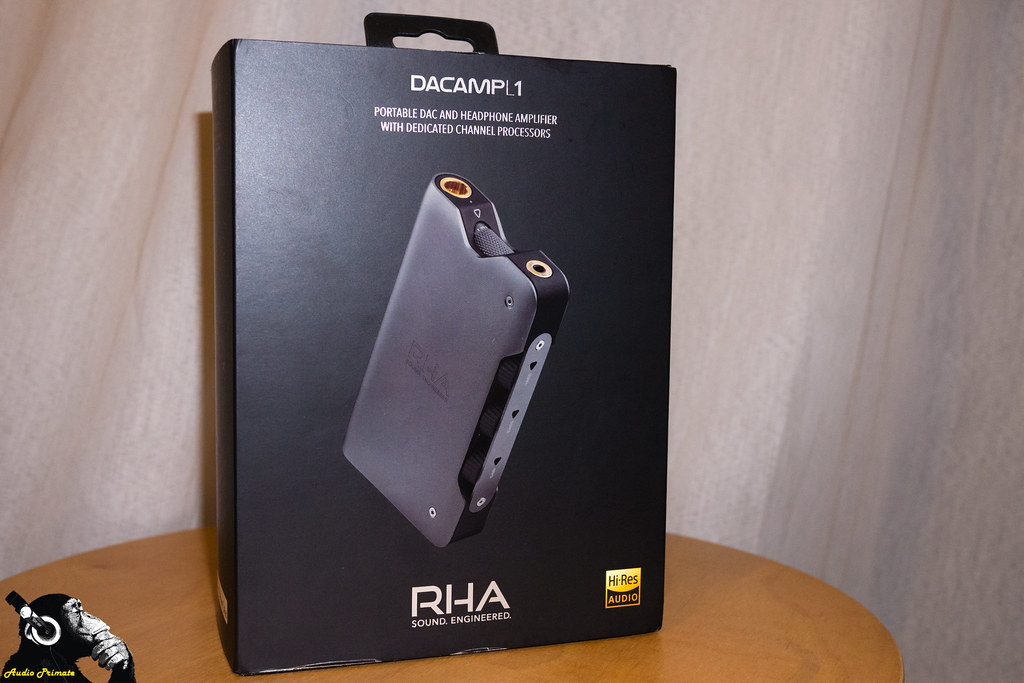 |
 |
 |
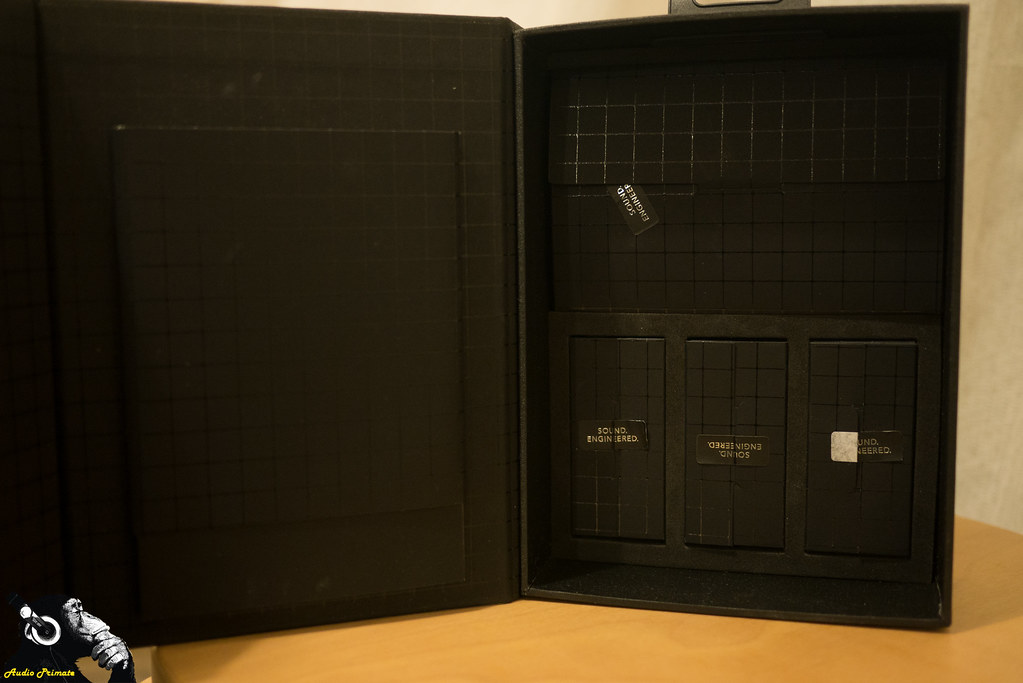 |
Build quality (physical characteristics)
The overall aesthetic of the DACAMP is industrial. The DACAMP L1 has a nice looking shape to it, but I think I would have preferred a flat edge instead of the rounded edge. Sometimes the best use of space is to have a DAC on it’s side. With the current design, this isn’t really possible without making the gain and tone controls inaccessible.
I like the volume knob. It has a good knurled feel and the labelling is helpful for knowing what kind of volume you are outputting. It turns really smoothly and I like its orientation. Others have complained that they would like the volume to increase by turning away from the top of the device; however, given my primary use on a desktop, the DACAMP L1’s current orientation allows me to post a finger on the top of the player and turn towards it in kind of a pinching motion. It feels really comfortable to me that way and allows really sensitive adjustments.
The tone controls and much of the outer part of the device are made of a smooth silken plastic. The smooth lines of the DACAMP L1 are interrupted by a vertical seam in the plastic near the headphone outputs showing where two piece of plastic meet. This isn’t the design choice I would make on a device being sold as premium. I’ve seen the choice of plastic on a number of cheap headphones. It feels silky, but my experience with it being used on inexpensive devices makes the DACAMP L1 feel inexpensive. It may just be me. I think Sennheiser used a similar plastic on their latest Bluetooth headphone.
I had a lot of problems with the USB micro input. This thing is picky on cables because of the deep inset of the USB micro slot—it’s kind of drilled into the face of the plastic and recessed. I had to frequently re-adjust cables that fit and some cables just didn’t work with the device. My recommendation is to stick with the included cable and take it everywhere with you, at least you can be confident it will work. A half millimetre less depth would have made all the difference. I had three USB cables not work at all. I had the best success with Anker cables, followed by my LH Labs Lightspeed USB Micro, but the latter required having it sit perfectly. The included USB cables worked. However, I found that my phone had decreased battery life when attached to the RHA DACAMP L1. It would be nice if the phone’s battery was left completely alone. If you hook up the phone after powering on the unit, you’ll use a lot of battery power from your phone quickly. Make sure your follow the instructions in the manual and hook up everything before powering the unit on; power drain is still there, but much more reasonable.
I had no problem connecting the DACAMP with my Android phone or any Windows computer (Windows 7 and 10). On my Note 2 (gawd it’s ancient), I was unable to get Tidal to play through the DACAMP L1, but music on my phone played beautifully. I noticed that the volume was much louder when playing from Android than when playing from my Windows 10 laptop. I don’t know the reason, but it is mildly annoying, as it messes up conclusions on the amplification a bit. How powerful the amplifier is depends on the source for me.
Audio quality
I listened to several headphones with the DACAMP, including the new RHA CL1 and CL750. I won’t be analysing those in this review much, as they will be getting their own reviews and will be paired with the DACAMP L1 in those. For this review I used the Noble Kaiser 10 Encore (K10E) with Effect Audio Ares II+ balanced cable and adaptors; as well as the HD600 with WyWires Red balanced cable with adaptor, and the Ultimate Ears Reference Remastered (UERR) in balanced (Ultimate Ears stock balanced cable) with an adaptor.
The best pairings I had with the DACAMP L1 were with decidedly non-neutral headphones, the Meze 99 Classics (balanced cable, does reduce bass distortion), and the RHA CL1. The Meze 99s are bass heavy with forward mids, and the DACAMP L1 sounds a touch more forward in the mids than my neutral reference (the Aune M1S). It’s a really strong pairing for tracks with strong bass and vocal components. Listening to some 2Pac, God Bless the Dead just thunders and rolls out of the DACAMP L1 and the Meze 99 pairing. Layering of vocals is clearly and beautifully rendered. That’s some serious hip-hop potency. How do you want it?
Just like that if you are a fan of hip-hop. What’s more, low gain and a volume setting of 2 drives the crap out of the Meze 99, I had to listen lower on some tracks. It sounded fantastic with hip-hop and dynamite with the chiptune reveries of Anamanaguchi. I highly recommend this highly coloured pairing. It’s a bitch slap to your ears just when you need it.
When I listened with the Meze 99 Classics with the iFi Micro iDSD Black Label (link is to the review), I found that I like a bit of treble boost to balance out the bass a little. You can do that on the DACAMP L1 too. There are of course trade-offs between the two. The DACAMP L1 is legitimately portable, but the iDSD Black Label has way more power and is a more flexible device that can drive sensitive IEMs all the way up to big cans without any hiss or distortion.
The DACAMP L1 is just made for the RHA CL1. These products were obviously tuned together. Some have observed scooped out mids on the CL1, but it didn’t feel that way on the DACAMP L1. They are a touch recessed, but still have good presence. I like the sound of the CL1, period, but I like it best out of the DACAMP L1.
I gave the DACAMP L1 a run through with the Aune M1S feeding it using the DACAMP only as an amplifier, and the reports of it not sounding as good as an amplifier are widely exaggerated. The amplifier was clear and well defined with the UERR on low gain. The image cast was a little bit improved from the Aune M1S alone or the DACAMP L1 alone. I think the M1S essentially acted as a pre-amp, which gave greater stage and clarity to the presentation. It is quite possible that other folks are hearing their sources’ line-outs exposed.
Positive things I noted on sound:
- No hiss with Noble K10E on single ended, which is a surprise given the 2.2Ω output impedance
- Excellent clarity and instrument separation
- Good range of gain for IEMs, including high impedance IEMs like the CL1 and CL750
- Volume control is smooth and distortion free
- Tone controls provide meaningful adjustments from subtle to really noticeable.
- The bass boost is potent (bassheads will be happy)
- The treble adjustment is equally noticeable. For those wanting a sharper treble, you’ll get it with the adjustments.
- Turning treble and bass down works, too, but is more subtle than the boosts.
Things I wasn’t so happy about:
- Volume swings are too large with my resident low impedance sensitive IEM, the Noble K10E. It was very hard to volume match—like doing the micro-adjustments necessary to get the precise perfect temperature in a shower (I’m finicky on water temperature).
- It doesn’t have enough juice to do an adequate job with the HD600. There is no way that it will adequately drive 600Ω cans. Maybe it can do 600Ω iems, but I highly doubt it. That spec is straight up false. There is no reason to set unknowing people up for disappointment like that.
- 4ohm output impedance on the balanced headphone output makes many headphones not an option in balanced mode. I opened up my custom adaptor to see if something was wrong when listening to the Noble K10E out of the balanced jack. Unfortunately, I was clumsy and now have to have the adaptor repaired.
- The single ended jack doesn’t sound as good as balanced with headphones with appropriate impedance. I tested this using the CL1 with the balanced Ag4 cable and a custom made 4-pin mini XLR to 3.5mm TRS (single ended) adaptor with volume matching. The stage width and imaging are better on Amber Rubarth – Tundra in balanced.
- Mids are a little forward on the amp
Comparisons
Comparisons were done using the UERR for reference, volume matched at 72dB. I’ve since discovered that I was lowering too much for the UERR, 76dB is about right; however, because I was comparing sources, not headphones, it didn’t matter for this comparison. I find that the UERR is louder in ear than universals, which I usually match at 78dB. I made comparisons to the Aune M1S, HiFiMan SuperMini and iBasso DX50 in single ended mode. White noise is random, so there isn’t a set dB level, which means that my dB measurements are objectively monitored but subjectively averaged over a period of observation. I also compared the balanced operation of the Aune M1S and HiFiMAN SuperMini to the single ended operation of the DACAMP L1 using a 2.5mm TRRS to 4-pin min XLR adaptor and a DIY 2.5mm TRRS to 3.5mm TRRS adaptor made by my friendly local wire and amp wizard. I have the UERR official Ultimate Ears balanced cable. I also made comparisons using the Noble K10E with the Effect Audio Ares II+ balanced cable using the same adaptors. Comparisons using the K10E were done with volume matching at 78dB, my standard listening level. The table below gives my settings information. I give this information so that people can replicate my observations, this removes some subjectivity, which is a good thing.
| DAP | Headphone6 | Gain setting | Volume
DAP number (~dB) |
| Single Ended | |||
| RHA DACAMP L11 | UERR | Low | ~1.9 (72.4) |
| Aune M1S (firmware 1.03) 1 | UERR | Middle | 70 (72.0) |
| HiFiMAN SuperMini1 | UERR | — | 21 (72.5) |
| RHA DACAMP L11 | Noble K10E | Low | ~1.75 (78.1) |
| Aune M1S1 | Noble K10E | Low | 78 (78.2) |
| RHA DACAMP L1 | RHA CL1 | High | ~2.2 (78.0) |
| Aune M1S | RHA CL1 | High | 77 (78.1) |
| RHA DACAMP L1 | Meze 99 Classics | Low | ~2.2 (78.0) |
| Aune M1S | RHA CL1 | Middle | 78 (78.1) |
| Balanced | |||
| RHA DACAMP L12 | Noble K10E | Low | ~1.9 (78.1) |
| Aune M1S | Noble K10E | Low | 69 (78) |
| HiFiMAN SuperMini3 | Noble K10E | — | 16 (77.2) |
| RHA DACAMP L1 | UERR | Middle | ~1.9 (72.1) |
| Aune M1S | UERR | Middle | 58 (71.8) |
| HiFiMAN SuperMini3 | UERR | — | 18 (72.3) |
| RHA DACAMP L1 | RHA CL1 | High | ~2.1 (78.0) |
| RHA DACAMP L14 | Sennheiser HD600 | High | 3.1 (78.1) |
| HiFiMAN SuperMini | Sennheiser HD600 | — | 27 (77.7) |
| Aune M1S5 | Sennheiser HD600 | High | 74 (78.1) |
| UERR Ultimate Ears Reference Remastered, K10E Noble Kaiser 10 Encore
1With Venture Electronics 2.5mm TRRS to 3.5mm TRS adaptor 22.5mm TRRS to 4-pin mini XLR adaptor 3With Venture Electronics 2.5mm TRRS to 3.5mm TRRS adaptor 4With 4-pin XLR to mini 4-pin XLR adaptor 5With XLR to 3.5mm TRRS and 3.5mm TRRS to 2.5mm TRRS adaptors 6UERR with Ultimate Ears stock 2.5mm TRRS cable, Noble K10E with Effect Audio Ares II+ 2.5mm TRRS, CL1 both with Ag4 and Ag4 plus mini 4-pin XLR to 3.5mm TRS, Meze 99 Classics with stock 3m cable |
|||
I am the adaptor king!
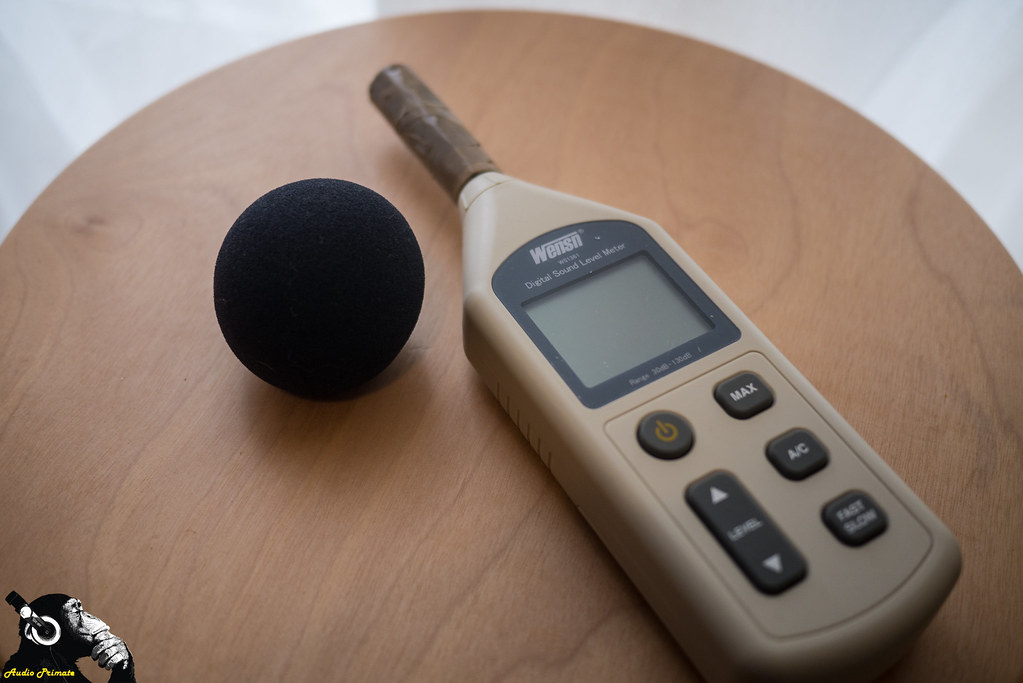 |
 |
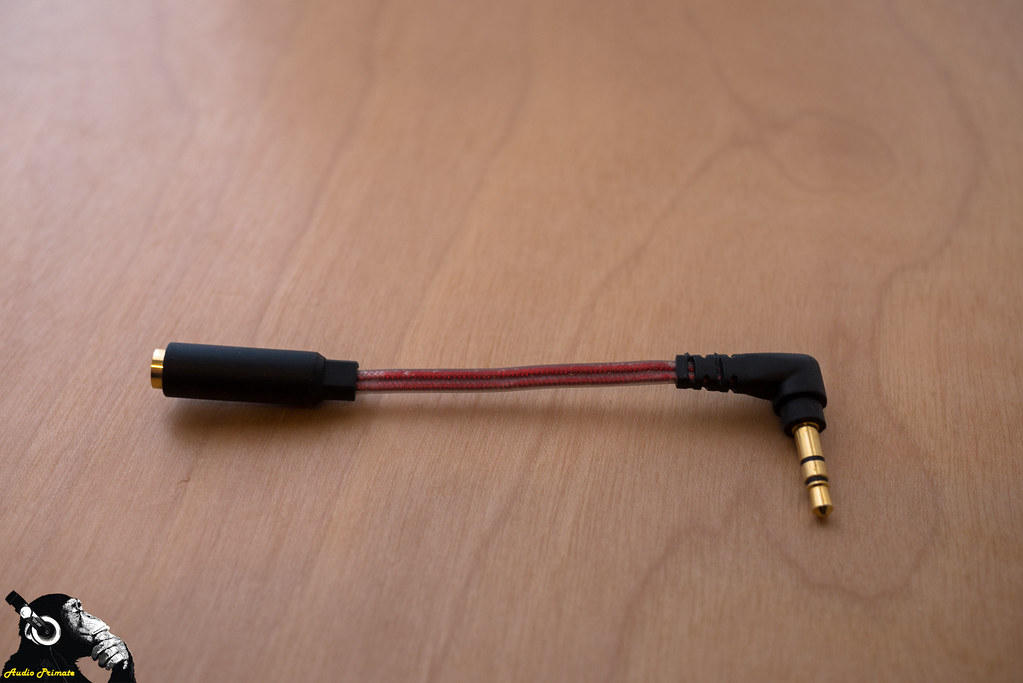 |
 |
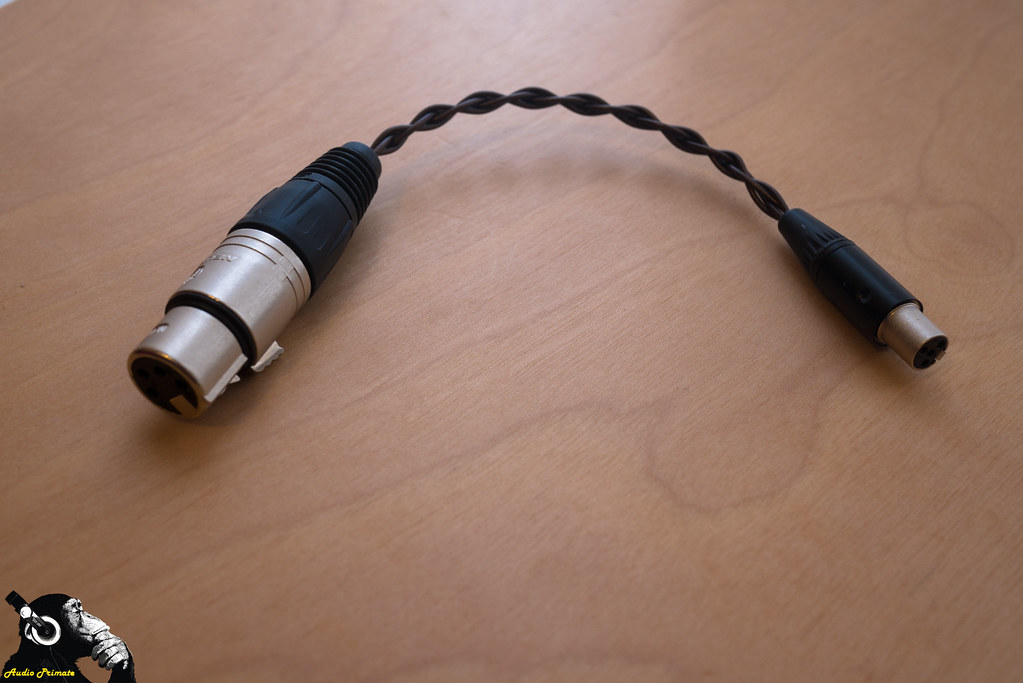 |
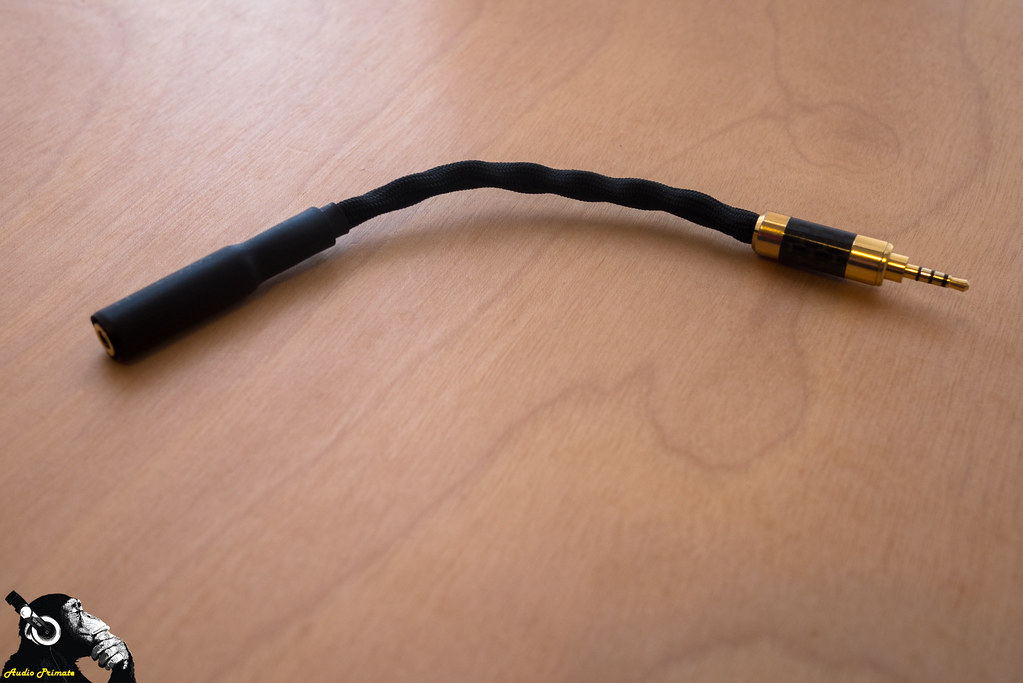 |
 |
 |
Whilst testing I observed that the single ended and balanced were likely the same power, as HeadFi’s @Brooko has previously measured, but that my 2.5mm to mini-4pin XLR adaptor likely adds a small amount of impedance, as observed by the volume levels on the UERR out of single ended and balanced. I may want to make a new adaptor or buy RHA’s adaptor when they get around to releasing it. However, I was able to confirm from RHA that the output impedance of the balanced output is 4.4Ω, which is totally inappropriate for most IEMs and caused audible distortion on the Noble K10E. There is simply no need to have such high output impedance as increasing damping factor has universally positive effects on sound by reducing the potential for distortion. Generally, output impedance should be as low as you can possibly make it. 2.2Ω is high, 4.4Ω is inappropriate for most IEMs but may be okay for a good variety of full-size headphones.
For the comparisons below, the DACAMP L1 was fed with the following signal chain:
Dell Vostro — LH Labs Lightspeed 2G — iFi Micro iUSB3.0 — LH Labs Lightspeed 1G Micro — RHA DACAMP L1
Observations about amp power should be taken with a grain of salt, because I did observe that when I used my phone as a source the volume levels were higher. For instance, fed from the above chain the gain was set to high for the RHA CL1, but from my phone the gain for the CL1 was low. I don’t understand why there would be a difference, but this is what I’ve observed.
Aune M1S
The M1S destroys the DACAMP L1 and the SuperMini when listening to Fleetwood Mac – Dreams with either the UERR or the K10E. The DACAMP L1 has a smaller stage and lower detail resolution. The M1S strikes me as an excellent neutral reference. I had similar observations listening to the Noble K10E with Pixies – Where Is My Mind. The soundstage is bigger in all dimensions and the sound has greater clarity in single-ended. I couldn’t do a fair balanced connection comparison as the balanced output jack has far too high impedance at 4.4Ω for the K10E. In my experience doing volume matched comparisons between single ended and balanced on the M1S, the balanced connection is clearer, with even bigger soundstage, so I would anticipate a more severe beating but can’t do more than predict due to lack of empirical observation. This isn’t really a contest.
I also tested the M1S with the CL1, and it does an excellent job of driving it, so it’s capability to drive more demanding IEMs matches the DACAMP L1. The single ended output of the M1S outperforms the DACAMP L1 with the CL1. When I switched to balanced, it was closer, but the M1S was still sonically superior with the stage feeling more natural and the details being more discrete on the M1S. The M1S also sounded slightly better with the HD600 and Dragonforce—this really surprised me. It didn’t have quite enough grunt on bass, but the treble was well articulated and the soundstage was bigger than the DACAMP L1. On paper, the M1S shouldn’t do even acceptable with the HD600, given its power output, in practice, it sounded okay, but not nearly as good as the SuperMini.
HiFiMAN SuperMini
The SuperMini drives the HD600 much better than the DACAMP. When playing Dragonforce – The Fire Still Burns, the SuperMini gives a full, clean, dynamic sound with a good size soundstage. The DACAMP L1 sounds closed in and muffled. The soundstage is miniscule—like listening to IEMs. It simply doesn’t have enough power to do a good job with the HD600. The HD800 is easier to drive than the HD600, but I can’t see the DACAMP L1 having enough for the HD800 either—at least not out of my computer. The power I get out of the HD600 predicts a poor showing with the HD800, but I don’t have it on hand (big caveat!). In my experience with switching between amps for the HD600 and HD800, I’ve found that if an amp does really poorly with the HD600 it does poorly with the HD800 and vice versa. The DACAMP L1 does poorly with the HD600. You get sound, but that isn’t saying much. I get sound for the HD600 out of my laptop headphone out.
With the Noble K10E, the SuperMini hisses, like many DAPs. It also has some electrical buzzing from time to time, which isn’t good. I don’t recommend the K10E with the SuperMini.
Specifications
Every manufacturer has some advertising copy and specs that they provide to the public. Sometimes the copy is informative, sometimes it is just adspeak. Here’s a summary of the useful stuff that RHA had to say about the DACAMP L1 on their website:
- High-Resolution Audio certified by Japan Audio Society
- Fully balanced circuit configuration
- 12 step bass and treble control (-3dB to 9dB) for personalized sound
- Compatible with Android, iOS, Mac, Linux and Windows (driver required)
| Specifications | |
| Price | £399 ($499) |
| DAC chip(s) | Dual ESS SABRE32 ES9018K2M DAC chips with dual class AB amplifiers |
| Output power | 16Ω 300mW; 300Ω 28mW |
| Output impedance | 2.2Ω on single ended, 4.4Ω on balanced headphone output |
| Total Harmonic Distortion + Noise | 0.0018% |
| Dynamic Range | 111dB |
| Input connections | 3.5mm line in, USB A (for iOS), USB micro-B, mini-Toslink optical |
| Output connections | 3.5mm line out, 3.5mm headphone out, 4-pin Mini XLR (balanced) headphone out |
| Headphone impedance recommendation | 12Ω – 600Ω |
| Battery | 4000mW, ~10hr life |
| Format support | PCM 44.1-384kHz (16, 24, 32 bit); DSD64-DSD256 (single to quad DSD) |
| Dimensions | 118 x 73 x 20mm |
| Weight | 233g |
| Warranty | 3 years |
Conclusions
I highly anticipated the DACAMP L1 and performed pretty darn well, it just got sonically beat by something less expensive. What the DACAMP L1 does as a package is unique in truly portable DACs, providing treble and bass controls that have both cuts and boosts, a wide variety of inputs and outputs, compatibility with all OS’s and specific design features to simplify implementation, and playing DSD256 and PCM384 (Cozoy REI also does this). The DACAMP performed admirably, but the soundstage was rather not terribly impressive and the overall power of something sold as necessary amplification didn’t sell me too much. I really wanted to see it pull HD600 power out, but didn’t expect it to given its modest specifications. The 4.4Ω impedance caused distortions to the sound of the Noble K10E in balanced mode, and that high output impedance rules out using sensitive headphones in balanced mode with an adaptor.
Overall, the DACAMP L1 is a competitive package that feels like it falls just a little short of other options out there in a similar price range. If given the choice, I’d take the iFi iDSD Black Label over the RHA DACAMP L1 every time, even with the higher cost and large footprint. Right now, I’m perfectly happy with the Aune M1S, which bested it on overall audio quality, but it isn’t nearly as multipurpose as the DACAMP L1.



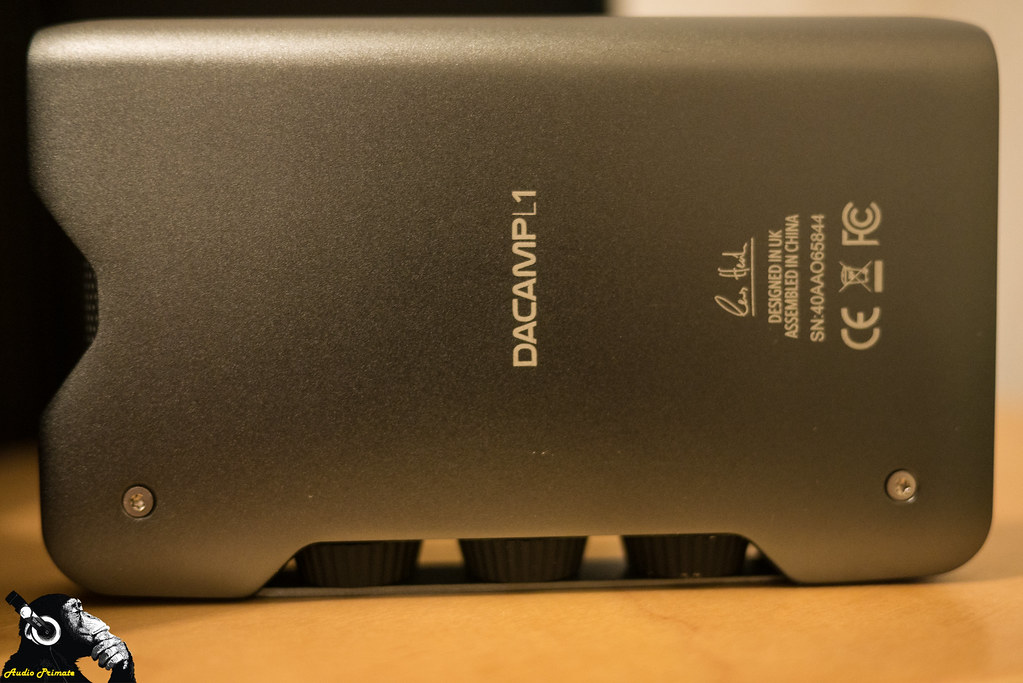
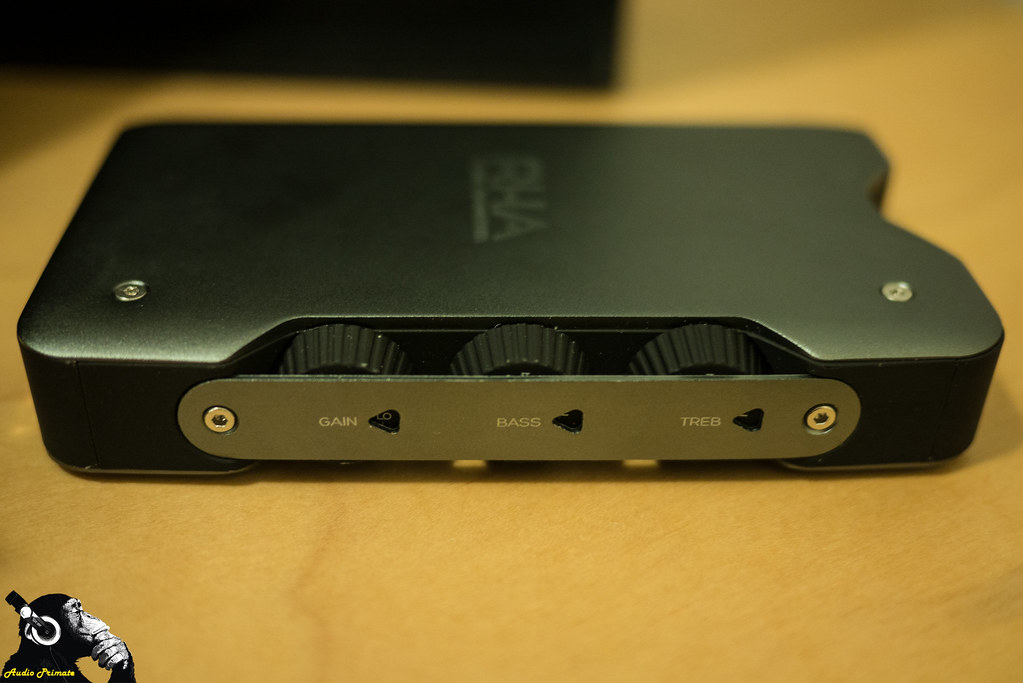



I got an ibasso dx50, i’ll get aune m1s next week, can i call it an upgrade?
LikeLike
Sound-wise it is a definite upgrade. There are some features you may miss, like external DAC and user replaceable batteries.
LikeLiked by 1 person
I see, i read some fellas in headfi experienced screen issue like blue red line on the screen, did you experience the same issue?
LikeLike
I’ve had no issues with lines on the screen.
LikeLike
Ok cool, have you tried comparing this m1s to dx90? I heard dx90 use dual sabre chip, m1s got single or dual sabre chip?
LikeLike
Ok cool, have you tried comparing this m1s to dx90? I heard dx90 use dual sabre chip, m1s got single or dual sabre chip?
LikeLike
I do not have a DX90 and they are no longer manufactured. I liked it when I heard it, but most devices that play music are decent until you compare them to something. If my memory is right firmware updates for the DX50 brought the sound much closer to the DX90. Sorry I can’t be more helpful.
Poor DACAMP, the conversation is all about the M1s in its comments section.
LikeLike
I never had this amp , I won’t to get one ever, due to some good reasons , but a I build and sale cables on Ebay and a fellow from Germany ask me a cable to connect his L1 with a pair of Hifiman Sundara.
I’ve emailed Rha and asked them pin config (R+,R-,L+,L-)for balanced output and rha refused to let me know this thing.
So here I am with this question, if you can help me:what’s the chanell configuration on balanced output on this amp?
Kind regards Mihai
LikeLike
It’s a standard mini-xlr pin configuration, as far as I know. The pins on most mini and full size XLR connectors are numbered, so if the connection is XLR to mini-XLR it should be easy.
When this amp came out I told RHA they needed to make adaptors, but they never did and then there was a lot of personnel turnover. Chances are that the folks you asked were marketing types that didn’t know any better.
LikeLike